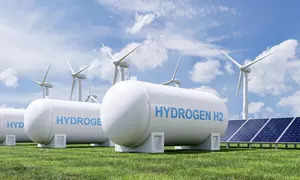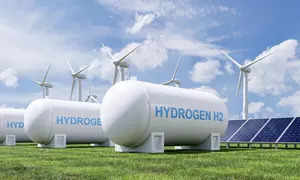
Widespread adoption of Green Hydrogen is still far away in India due to challenges such as pricing, electrolyzer efficiencies, and the overall cost of generation, according to Amit Jain, CEO and country manager of Engie India.
Speaking to ETEnergyworld in an exclusive interview, Jain emphasized the need for lower prices and improved efficiencies, acknowledging the government’s efforts to subsidize transmission costs and promote adoption through schemes like the production-linked incentive (PLI) scheme. However, Jain noted that it would take time for these costs to reach a level where widespread commercial use becomes viable.
“Despite the hurdles, we see immense potential in India as a hub for green hydrogen, primarily for fulfilling domestic energy needs rather than solely focusing on exports,” he said.
Regarding Engie’s recently adjusted target to build about 4 GW of green hydrogen projects by 2035, Jain said, “The global targets were extended due to factors such as market maturity, pricing, and the availability of electrolysis technology.”
“Our focus on green hydrogen has evolved to prioritize the renewable component, recognizing the crucial role of renewable power in hydrogen production.”
The France-based company’s strategic shift includes partnerships aimed at integrating renewable power into green hydrogen projects. Jain mentioned a project in Oman as an example, highlighting Engie’s shift in focus on partnering with entities that need to undertake a hydrogen project but lack the renewable energy component.
Regarding potential improvements in India’s renewable energy policies, Jain highlighted the need for stability and clarity. He pointed out issues such as fluctuating taxation, duties, and changing policies that create uncertainty for businesses. Jain stressed the importance of streamlining processes, legal frameworks, and taxation to facilitate smoother adoption and meet ambitious renewable energy targets.
The Ministry of New and Renewable Energy (MNRE) had last month issued scheme guidelines for setting up of green hydrogen hubs under the National Green Hydrogen Mission.
“I think what can be improved is around taxation, duties, and having stable policies,” said Jain. “There have been talks about ALMM being introduced and then taken back. I think those kinds of changes, if expedited, could streamline documents, processes, legal frameworks, and taxation.”
Engie India’s insights underscore the broader industry sentiment that while the potential for green hydrogen is vast, supportive policies and frameworks are crucial to unlocking its full benefits and accelerating the transition towards a sustainable energy landscape.


